Diving into the world of dog training toys, we find a treasure trove of tools that not only entertain but also educate our furry companions. These playful aids can be the key to unlocking your dog’s potential, turning mundane training sessions into enjoyable bonding experiences. Let’s explore how these toys can transform your pet’s life and enhance their skills, one wag of the tail at a time.
The Ultimate Guide to Dog Training Toys: Enhance Your Pup’s Skills with Fun and Games!
Dogs are a bundle of joy, but they also require a bit of work to ensure they are well-behaved and mentally stimulated. One of the most effective ways to achieve this is through the use of dog training toys. These toys aren’t just for playtime; they’re designed to help your furry friend learn new commands, improve their focus, and build their confidence. In this guide, we’ll explore the best dog training toys available, how to choose the right one for your pup, and the benefits they bring to your training sessions.
1. Interactive Treat Dispensers
Interactive treat dispensers are a game-changer for dogs that need a little extra motivation during training. These toys encourage your dog to use their brain and paws to earn their treats, which can be incredibly rewarding for both of you. Look for dispensers with varying difficulty levels to keep your dog challenged as they progress in their training.
2. Puzzle Toys for Mental Stimulation
Puzzle toys are fantastic for mental stimulation. They come in all shapes and sizes, from simple treat puzzles to complex multi-layered mazes. These toys require your dog to think critically, problem-solve, and use their senses. This not only aids in training but also helps to prevent boredom and destructive behavior.
3. Tug Toys for Physical and Social Interaction
Tug toys are a classic for a reason. They provide physical exercise and can also be a great way to strengthen the bond between you and your dog. When using tug toys, it’s important to teach your dog that it’s a game, not a fight, and to maintain control over the toy to avoid aggressive play. Choose sturdy materials that can withstand a good amount of pulling.
4. Chewing Toys for Dental Health
Chewing is a natural behavior for dogs, and it’s essential for maintaining healthy teeth and gums. Dental chew toys come in a variety of textures and toughness levels, so you can find one that suits your dog’s preferences and needs. These toys can also be used during training sessions to reinforce commands with a treat or a special chew.
5. Noisy Toys for Attention and Focus
Some dogs respond well to noise. Noisy toys, like squeaky balls or interactive puzzles with jingling parts, can be excellent for capturing your dog’s attention and maintaining focus during training. Just be mindful of the noise level to ensure it’s not overwhelming for your pup or your neighbors.
6. Soft Toys for Calming and Comfort
Soft, plush toys can be a great comfort to dogs, especially during moments of stress or anxiety. They can also be used to reinforce calm behavior during training. These toys can be a safe haven for your dog to retreat to when they need a break or a moment to relax.
7. Training Clickers for Consistency
A training clicker is a small, handheld device that makes a distinctive “click” sound when pressed. This sound is a conditioned stimulus that signals to your dog that they’ve performed a command correctly. Using a clicker consistently during training can help your dog understand what behaviors you’re rewarding, leading to more effective training sessions.
8. Reflective Toys for Safety
Reflective toys can be especially useful for dogs that spend time outdoors or in low-light conditions. These toys often have reflective strips or a glow-in-the-dark feature that helps keep your dog visible to others, ensuring their safety during play or training exercises.
9. Toy Variability for Preventing Boredom
Dogs can get bored with the same old toys, so it’s important to rotate your pup’s toy collection regularly. Introducing new toys can keep your dog engaged and prevent them from getting too comfortable with their current selection. This variety also allows you to tailor the training experience to your dog’s evolving interests and abilities.
10. Safety First
When choosing dog training toys, always prioritize safety. Ensure that the toys are made from non-toxic materials, are free of small parts that could be swallowed, and are appropriate for your dog’s size and strength. Regularly inspect your dog’s toys for signs of wear and tear, and replace them if they become damaged.
Incorporating dog training toys into your daily routine can significantly enhance your dog’s training experience. These toys are not only fun and engaging but also provide a wealth of benefits, from physical exercise to mental stimulation. By selecting the right toys and using them effectively, you can create a well-rounded training program that keeps your pup happy, healthy, and well-behaved.
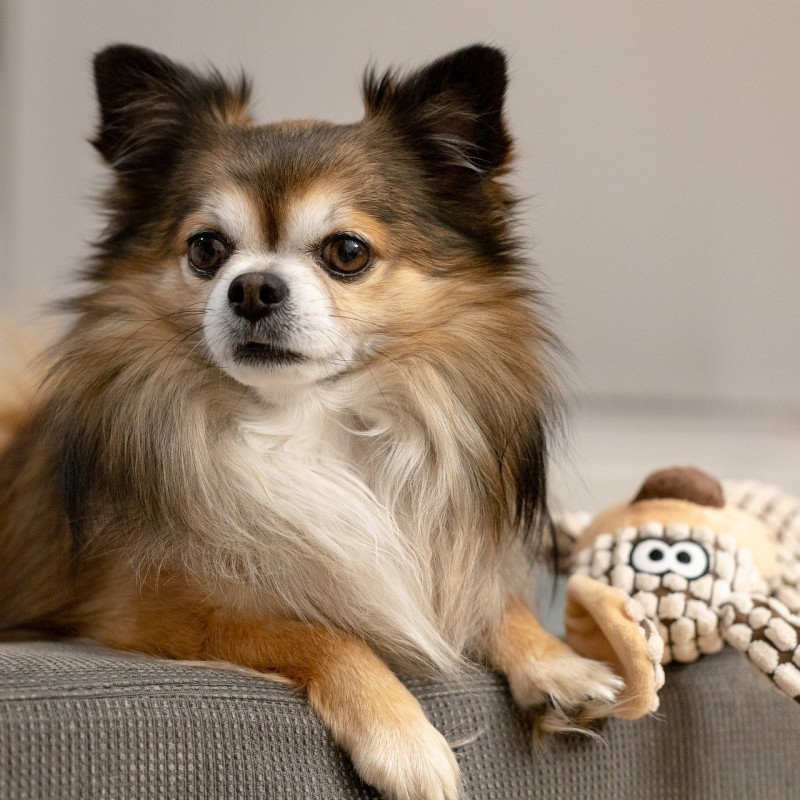
Why Dog Training Toys Are a Must-Have for Every Pet Parent
Dog training toys aren’t just a trendy item; they’re an essential tool for any pet parent looking to shape their furry friend into a well-behaved companion. Here’s why these playful tools are a must-have for every dog owner:
-
Encourages Physical Activity: Dogs are naturally active creatures, and training toys can help keep them in top shape. Engaging with these toys can provide a great workout, especially for breeds that require regular exercise to stay healthy.
-
Improves Cognitive Function: Many dog training toys are designed to stimulate your dog’s mind. Puzzles and interactive games can challenge your dog’s problem-solving skills, helping to sharpen their memory and mental agility.
-
Strengthens Bonding: Training sessions with toys can create a special bond between you and your dog. Sharing these moments of fun and learning can deepen your connection, making your time together more rewarding.
-
Teaches New Commands and Skills: Using toys as a reward or motivator can make teaching new commands or tricks more effective. Dogs are more likely to respond well to training when they associate it with playtime.
-
Prevents Boredom and Destructive Behavior: A bored dog can lead to destructive behavior, such as chewing on furniture or other inappropriate items. Keeping your dog entertained with training toys can help prevent these issues.
-
Promotes Independence: Toys that keep your dog entertained on their own, like treat dispensers or puzzle games, can help your pup learn to be independent. This is particularly useful when you’re not around to provide constant supervision.
-
Enhances Socialization: Interactive toys can also help your dog socialize better with other dogs. Games that encourage teamwork or sharing can teach your dog to be more cooperative and friendly.
-
Teaches Patience and Focus: Some training toys require patience and focus to use. Teaching your dog to use these toys can help them develop these traits, which are beneficial for their overall behavior and training.
-
Safe and Non-Toxic Materials: High-quality dog training toys are made from safe, non-toxic materials that are durable enough to withstand rigorous play. This ensures that your dog can enjoy their toys without any health risks.
-
Variety of Toys for Different Needs: There’s a wide range of dog training toys available, each designed to address different aspects of training and play. From tug-of-war ropes to scent-dispensing puzzles, you can find a toy that suits your dog’s specific needs and preferences.
-
Easier Potty Training: Toys can also be a valuable aid in potty training. Treat-dispensing toys can be used to reinforce good bathroom habits, rewarding your dog for going to the right spot.
-
Reduces Separation Anxiety: Dogs with separation anxiety can benefit from having a toy to comfort them when you’re not home. A familiar toy can help soothe their nerves and make the transition easier.
-
Cost-Effective: While some training toys can be an investment, they are often more cost-effective than the potential damages caused by a dog’s boredom or destructive behavior. Plus, well-maintained toys can last for years.
-
Keeps the Brain Active: Regular play with training toys keeps your dog’s brain active and engaged. This can be especially important for older dogs, as it helps to slow down cognitive decline.
-
A Fun Alternative to Treats: For dogs who have health issues that restrict their treat intake, training toys can provide a fun and engaging alternative to traditional treats.
In conclusion, dog training toys offer a multitude of benefits that can enhance your dog’s life and your relationship with them. Whether you’re looking to improve your dog’s physical health, mental stimulation, or just have some fun together, these toys are an invaluable addition to any pet parent’s arsenal.
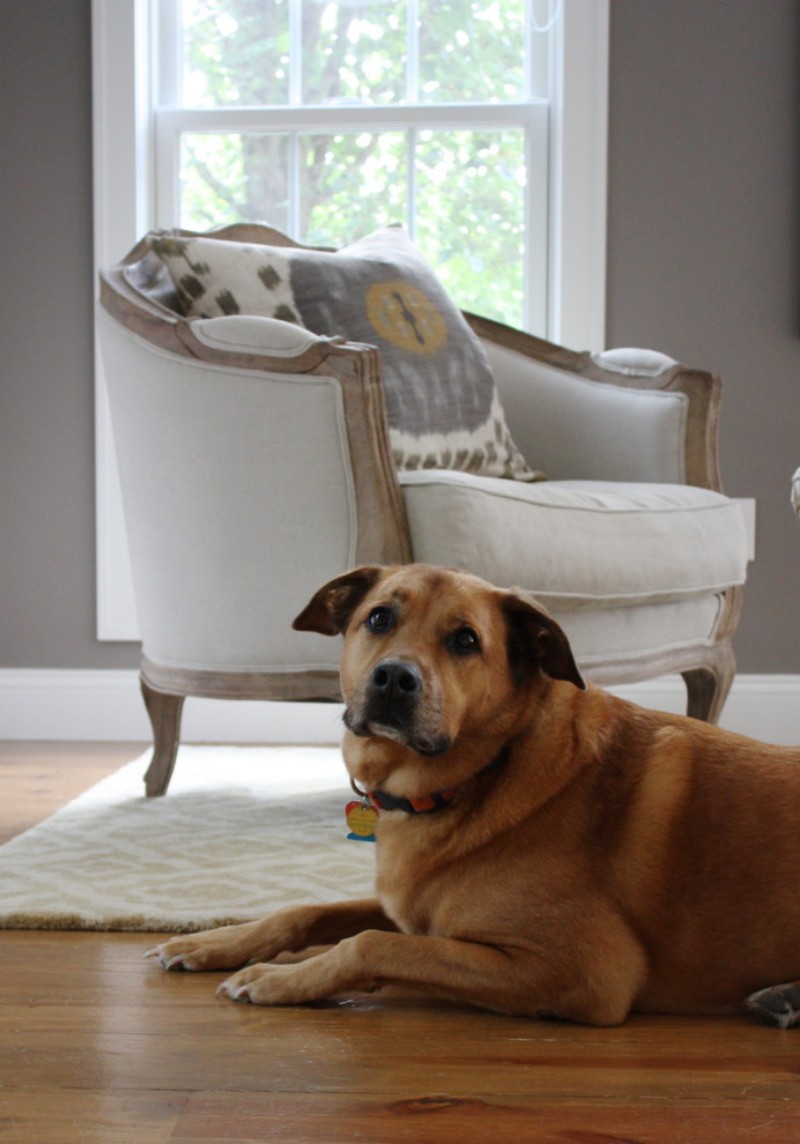
Top 5 Dog Training Toys That Will Keep Your Pup Engaged and Educated
-
The first toy on our list is the Classic KONG. This versatile rubber toy is a staple in many dog training sessions. Its hollow center allows for stuffing with treats or peanut butter, making it irresistible for your pup. Not only does it keep them occupied for hours, but it also helps in training them to wait for their rewards.
-
Moving on to the second pick, the Busy Buddy Tug-a-Jug is a fantastic choice for interactive play. This toy is designed to encourage your dog to use their problem-solving skills. With its rotating ball that dispenses treats as your dog plays, it’s perfect for mental stimulation. Plus, the durable construction ensures it can withstand even the toughest chewers.
-
Third on our list is the Nina Ottosson by Outward Hound. These puzzle toys are ingeniously designed to challenge your dog’s mind. With various difficulty levels, they’re great for dogs of all ages. The interactive nature of these toys helps in training your pup to focus and think, which can be a great way to prevent boredom and destructive behavior.
-
The fourth toy that we think is a must-have for training is the Chuckit! Ultra Ball. This is more than just a ball; it’s a training tool that can help teach your dog to fetch. The ultra-bounce technology means the ball goes further and higher, making fetch games more exciting and encouraging your dog to engage in physical activity. It’s also durable, which is essential for long-lasting play sessions.
-
Rounding out our top five is the Booda Bone. This is a unique chew toy that is not only great for dental health but also doubles as a training aid. Its ridges are perfect for massaging your dog’s gums and teeth, and the bone’s shape helps in training your dog to hold and carry objects. It’s a versatile toy that can be used to reinforce commands like “hold” or “drop it.”
-
Each of these toys offers a different aspect of training, whether it’s mental stimulation, physical exercise, or reinforcing good behavior. The Classic KONG is ideal for teaching patience and waiting, while the Busy Buddy Tug-a-Jug is great for interactive play and problem-solving skills. The Nina Ottosson puzzles are perfect for mental engagement, and the Chuckit! Ultra Ball is a fantastic way to incorporate physical activity into training.
-
The Booda Bone, on the other hand, is a great tool for teaching your dog to hold and carry items, which can be useful for teaching commands and even for agility training. It’s also a healthy way to keep your dog’s teeth clean and gums healthy, which is an important part of their overall well-being.
-
When choosing a dog training toy, it’s important to consider your dog’s specific needs and preferences. For example, if your dog is a chewer, you’ll want to pick a toy that is specifically designed for durability. Similarly, if your dog is a puzzle solver, a puzzle toy like the Nina Ottosson will be more engaging than a simple ball.
-
Additionally, the right toy can make a big difference in the effectiveness of your training sessions. A toy that your dog loves can help keep them focused and motivated, making the training process more enjoyable for both of you. It’s all about finding that perfect balance between fun and learning.
-
In conclusion, the top five dog training toys we’ve highlighted here are not only engaging and entertaining for your pup but also serve as valuable tools in your training arsenal. From classic KONGs to innovative puzzle toys, each one has its unique benefits. So, whether you’re working on basic commands or preparing for agility classes, these toys can help make the process more effective and enjoyable for both you and your four-legged friend.
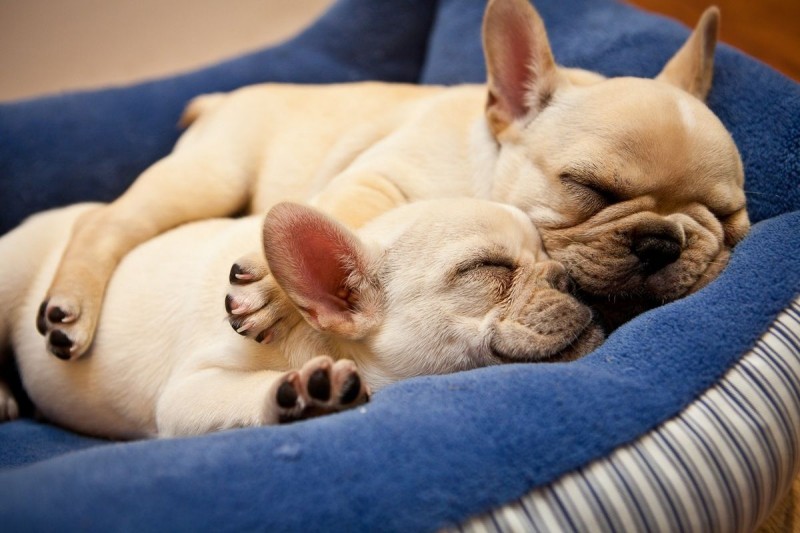
Interactive Play: How Dog Training Toys Can Strengthen the Bond Between You and Your Dog
Interactive play isn’t just about keeping your dog entertained; it’s a powerful tool that can deepen the bond between you and your furry friend. Here are five ways that dog training toys can enhance your relationship through engaging and interactive play:
-
Shared Successes Build Trust: When you engage with your dog using training toys, you’re creating a space for shared achievements. Each time your dog completes a task or solves a puzzle, it reinforces the idea that teamwork leads to success. This mutual success can build trust and a sense of partnership that goes beyond simple obedience.
-
Communication and Understanding: Using interactive toys, especially those that require communication between you and your dog, can strengthen your understanding of each other. For example, a treat-dispensing puzzle toy requires your dog to communicate its needs to you, and you to respond appropriately. This back-and-forth can lead to a better understanding of each other’s cues and intentions.
-
Emotional Connection Through Play: Play is a universal language that dogs understand and enjoy. By incorporating interactive training toys into your playtime, you’re not only providing mental stimulation but also fostering an emotional connection. The joy and excitement your dog shows when they play with a toy they love can be infectious, making your interactions more rewarding and heartwarming.
-
Physical Bonding Through Exercise: Interactive play with training toys often involves physical activity, which can strengthen the bond between you and your dog. Whether it’s chasing a ball, tug-of-war with a rope toy, or fetching a frisbee, these activities encourage both of you to move and play together. Physical exertion can release endorphins, creating a sense of well-being and happiness that brings you closer.
-
Learning Together: Dog training toys are designed to challenge your dog’s mind and teach them new skills. As you work together to solve puzzles or teach commands, you’re not just training your dog; you’re also learning about each other. This mutual learning experience can create a special bond as you both grow and adapt to new challenges.
-
Customized Engagement: Each dog has its own preferences and energy levels. Interactive training toys allow you to tailor playtime to your dog’s individual needs. A toy that’s too difficult might frustrate your dog, while one that’s too easy might bore them. Finding the right balance with a training toy that suits your dog’s personality and play style can lead to more meaningful interactions.
-
Longevity in Play: Interactive toys are often designed to last, with durable materials and intricate designs that can keep your dog interested for hours. This longevity means you can enjoy extended play sessions that offer continuous opportunities to bond and learn together.
-
Stress Relief for Both: Interactive play can be a great stress reliever for both you and your dog. It provides an outlet for excess energy and can help reduce anxiety. By engaging in play, your dog may find it easier to cope with the pressures of daily life, and you may find that your stress levels decrease as well.
-
Teaching Patience and Persistence: Many interactive toys require patience and persistence to use. Whether it’s a toy that requires your dog to turn it over to get a treat or one that involves a series of steps to reveal a hidden prize, these toys can teach your dog the value of patience and the importance of not giving up.
-
Cognitive Stimulation: Beyond physical activity, interactive toys provide cognitive stimulation that can keep your dog’s mind sharp. This is especially important for senior dogs or those with cognitive issues, as it can help maintain their mental health and prevent boredom or depression.
By incorporating interactive dog training toys into your daily routine, you’re not just providing your dog with fun and entertainment; you’re also nurturing a deeper, more meaningful connection. The time and effort you invest in these play sessions can pay off in countless ways, from a more contented pet to a stronger, more fulfilling relationship.

Choosing the Right Toy: Tips for Selecting the Best Training Aids for Your Dog’s Personality
Understanding your dog’s personality is key to selecting the right training toy that not only challenges but also delights them. Here’s how to pick the perfect companion for your furry friend:
Dogs are as varied as the colors of their coats, and their personalities can range from the laid-back and relaxed to the hyper and energetic. A toy that suits one dog might be a complete dud for another, so it’s important to consider a few factors before making your choice.
For the Puzzler: Dogs that love to solve problems and figure things out will thrive with puzzle toys. These toys often come with compartments to hide treats or require the dog to manipulate parts to reveal the reward. Think of toys like treat-dispensing balls or puzzle feeders that challenge your dog’s mind.
If your dog is the type that paws at anything new and enjoys the mental workout, a puzzle toy can be a game-changer. They not only keep your dog entertained but also help to sharpen their cognitive skills. A favorite among many is the KONG Wobbler, which can be filled with treats to keep your pup occupied for hours.
For the Chewer: Some dogs are notorious for their chewing habits. These pups need toys that can withstand a hearty gnawing. Look for toys made from durable materials like rubber, nylon, or even rope.
For the Chews, a durable teether like the Booda Bone can be a lifesaver. It’s designed to be tough yet gentle on your dog’s teeth, reducing the risk of tooth damage or ingestion of small pieces. Remember to keep an eye on your dog when they’re using a chew toy, especially if it’s a large piece that could become a choking hazard.
For the Swaller: Dogs that have a tendency to swallow toys whole need toys specifically designed to be ingested safely. Look for toys with holes or made from a material that’s not easily broken down into small pieces.
The KONG Extreme is a great choice for strong chewers. Its thick walls and strong construction make it nearly indestructible, and it can be filled with peanut butter or treats to keep your dog’s attention and provide a healthy alternative to swallowing toys.
For the Fetcher: Dogs that are driven by the thrill of a good chase will love interactive toys that encourage fetching. A sturdy frisbee or a Chuckit! ball can provide endless hours of playtime and exercise.
These toys not only help in training your dog to bring back their toys but also help in maintaining their physical health by providing an outlet for their natural instincts to chase and fetch. The Chuckit! Ultra Ball, for example, is designed to bounce well on all surfaces, making it perfect for dogs that love to run and play fetch.
For the Tugger: If your dog has a strong prey drive and loves to tug, consider a tug toy that can withstand a lot of pulling without breaking. The West Paw Zogoflex Tug-a-Jug is a favorite among many dogs, as it’s made from a durable, flexible material that doesn’t easily tear or fray.
Tug-of-war can be a great way to bond with your dog while also teaching them to follow commands and respect boundaries. Just be sure to set clear rules and avoid letting your dog win too often, as this can lead to dominance issues.
For the Sitter: Dogs that prefer to observe and interact with their environment from a distance might enjoy toys that allow them to watch the world go by. A birdhouse or a window perch with a toy attached can provide entertainment and mental stimulation without the need for much physical activity.
These types of toys can help satisfy a dog’s natural curiosity and keep them engaged, especially when you’re not around to play. The Busy Buddy Treat Ball is a good example, as it can be filled with treats and placed on a window sill or in a safe area of the home.
For the Sniffer: Dogs with a keen sense of smell will appreciate toys that encourage sniffing and investigation. Hide-and-seek games using toys like the Outward Hound Hide-A-Squirrel can be both mentally stimulating and enjoyable for dogs that love to use their nose.
These toys are designed to hide treats or small toys within a larger structure, encouraging your dog to use their sense of smell to find the hidden items. It’s a great way to keep your dog’s mind active and their nose working.
When choosing a training toy, also consider your dog’s size and strength. A toy that’s too small or too weak for your dog’s size or chewing intensity can become a safety hazard. Always supervise playtime, especially when introducing a new toy, to ensure it’s appropriate for your dog.
Remember, the best toy for your dog is one that they enjoy and that complements their personality. By selecting the right training aid, you can create a fun and effective training experience that strengthens the bond between you and your four-legged companion.
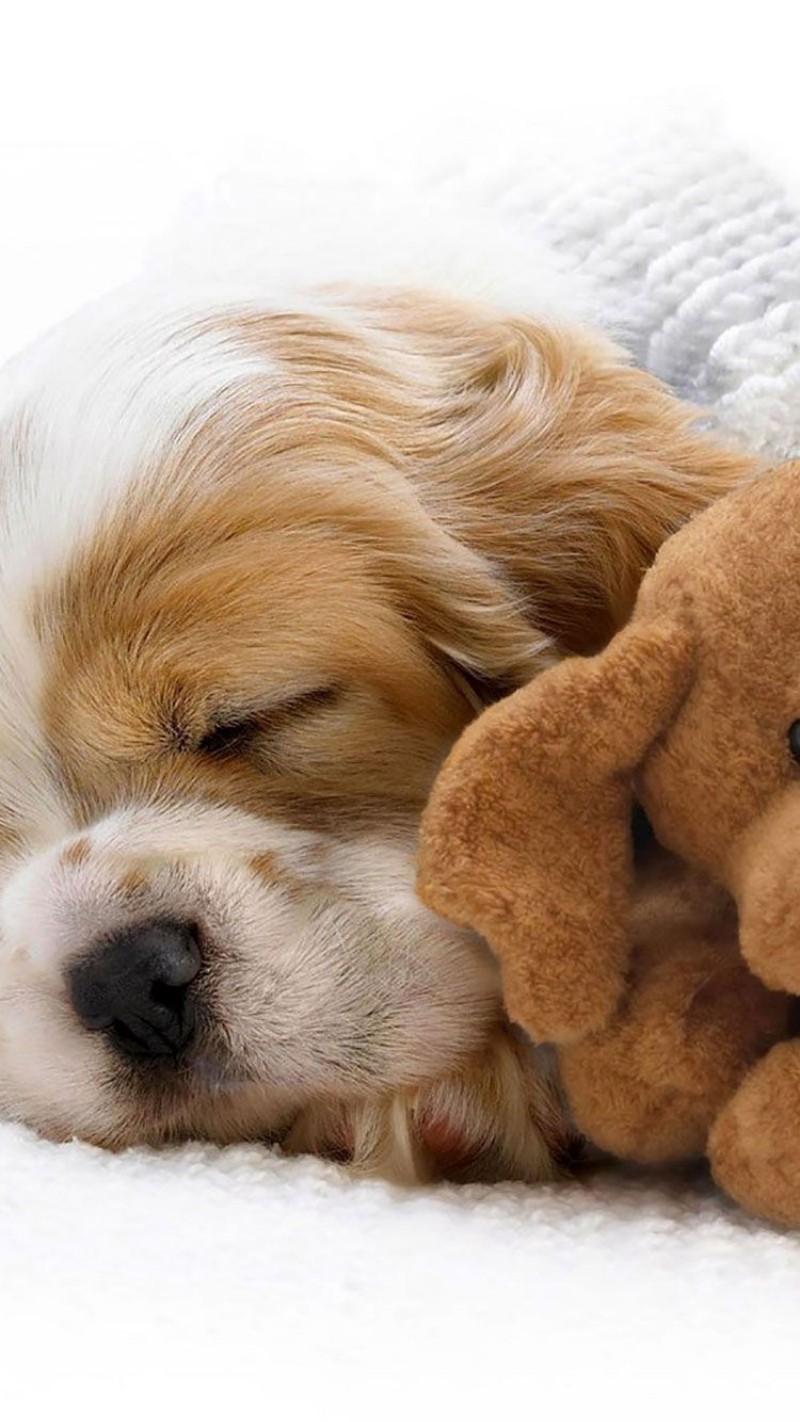
From Basic Commands to Advanced Skills: A Toy for Every Stage of Training
Choosing the right dog training toy is as important as selecting the right treat. Different toys can cater to various stages of training, from basic commands to more advanced skills. Here are some considerations to ensure you find the perfect toy for each stage of your dog’s development.
The Foundation of Training: Simple Chews and Fetch ToysFor puppies or dogs in the early stages of training, simple toys like chew bones or soft plush fetch toys can be incredibly beneficial. These items help teach your dog about mouthing, bite inhibition, and the importance of playing fetch. A good chew toy not only keeps your pup occupied but also aids in dental hygiene, reducing the risk of tooth decay and gum disease.
Basic Commands: Puzzle Toys for Cognitive StimulationAs your dog masters basic commands, introducing puzzle toys can help reinforce these skills while also challenging their minds. These toys require your dog to figure out how to get to the treats or toys hidden inside. This cognitive engagement is excellent for maintaining your dog’s mental health, reducing anxiety, and preventing boredom. Puzzle toys like treat-dispensing balls or puzzle feeders encourage your furry friend to think, problem-solve, and focus on the task at hand.
Obedience Training: Toys with Tug of War PotentialFor obedience training, toys that encourage tug of war can be a great tool. This not only reinforces commands but also provides physical exercise. Tug toys help to build a strong bond between you and your dog while also teaching them about boundaries and self-control. Look for sturdy rope or nylon tug toys that can withstand the strength of a growing or highly energetic pup.
Advanced Skills: Toys That Mimic Real-Life SituationsOnce your dog has a solid grasp of basic obedience and advanced commands, it’s time to introduce toys that simulate real-life scenarios. For example, a toy that mimics a bird can be used to practice “catch” or “fetch” commands. These toys are great for dogs that have a strong prey drive and can help hone their attention and response times. Such toys can also be useful for agility training, where the element of unpredictability helps prepare your dog for various challenges.
Socialization and Confidence Building: Group Play ToysAs your dog becomes more confident, toys that encourage socialization are invaluable. A toy that is easy to share with other dogs, such as a plush toy with a squeaker, can help your pup learn appropriate play behavior and develop good social skills. These toys are especially useful for shy or nervous dogs, as they can offer a sense of comfort and confidence when meeting new friends.
Advanced Training: Toys That Challenge Coordination and Motor SkillsFor dogs that have a high level of training and coordination, consider toys that require precision and timing. A frisbee, for instance, is a classic training tool that challenges your dog’s hand-eye coordination and encourages a variety of commands like “catch” and “hold.” Similarly, a ball that bounces erratically can be a great tool for improving your dog’s motor skills and reaction time.
Special Needs: Toys for Dogs with Physical LimitationsNot all dogs are created equal, and some may have physical limitations that affect their ability to play with certain toys. In such cases, it’s important to choose toys that are appropriate for your dog’s specific needs. For example, a lightweight, soft toy might be more suitable for a senior dog with arthritis, while a durable, interactive ball might be better for a young dog with a lot of energy.
Maintenance and Hygiene: Toys That Are Easy to CleanAs your dog’s training progresses, it’s important to consider the maintenance aspect of the toys you choose. Opt for toys that are easy to clean, whether they’re washable or have removable parts that can be cleaned in a dishwasher. Keeping training toys clean not only ensures they last longer but also prevents the spread of bacteria or germs.
In conclusion, selecting the right toy for each stage of your dog’s training journey can significantly enhance the effectiveness of your training sessions. From basic commands to advanced skills, each stage of training offers a unique opportunity to bond with your dog and build a strong relationship based on trust, respect, and shared fun. Whether you’re working on basic obedience, complex tricks, or just looking to keep your dog engaged and healthy, there’s a toy out there that can help make every training session a rewarding experience.
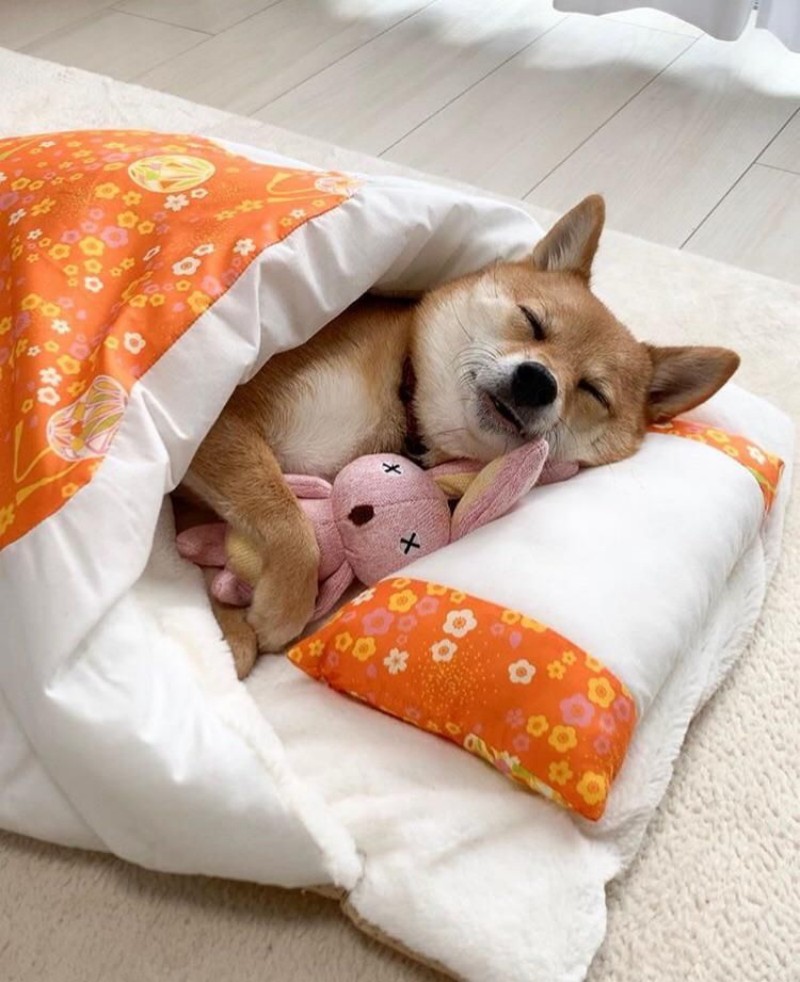
Real-Life Success Stories: How Dog Training Toys Transformed Our Furry Friends
In the world of dog training, toys have become an invaluable tool, transforming our furry friends into well-behaved companions. From basic obedience to complex tricks, these playful aids have not only enhanced our dogs’ skills but also deepened the bond between us. Let’s delve into some real-life success stories that showcase how dog training toys have made a difference.
One story that stands out involves Max, a Golden Retriever with a knack for fetching. His owner, Sarah, struggled to teach him the “stay” command. Using a durable interactive treat dispenser, Sarah engaged Max in a game of hide-and-seek. Each time Max stayed in place, he earned a treat. The toy not only kept Max occupied but also reinforced the “stay” command, making the training process enjoyable for both.
Another success story comes from Mark, who trained his Shiba Inu, Luna, to perform the “roll over” trick. Luna was known for her stubbornness, but with the help of a soft, plush toy with a bell inside, Mark introduced the concept of the command through play. Luna was immediately intrigued by the bell’s sound and would follow it with excitement. The toy became a catalyst for Luna’s learning, turning a challenging trick into a fun activity.
For many dogs, the “come” command is crucial for safety, and training it can be a challenge. One such story involves Emma, a Labrador Retriever who would often ignore the command. Her owner, Jake, decided to use a brightly colored tug toy as a lure. Whenever Emma saw the toy, she was drawn to it, and Jake used this to his advantage. The toy served as a visual cue that triggered Emma’s response, and soon, she was coming back on command, often dragging the toy with her.
In a case of potty training, a toy played a pivotal role in helping a dog learn the right spot. Lily, a Chihuahua, had a habit of urinating inside the house. Her owner, Lisa, introduced a small, portable doghouse with a bell, which was placed in the desired outdoor area. Lily was encouraged to go in the doghouse and ring the bell, signaling to Lisa that she needed to go outside. The toy turned into a symbol of the correct behavior, and Lily quickly learned where to go.
Training for agility and speed can be fun with the right toy. Tom, an owner of a Border Collie named Leo, wanted to improve his dog’s recall during agility runs. They used a lightweight, brightly colored frisbee that Leo was already fond of. The toy’s unique design made it easy for Leo to catch, and the game became a part of their regular training sessions. Leo’s recall improved significantly, and the toy became a key element in their success.
For dogs with separation anxiety, training toys can provide a sense of comfort and mental stimulation. Jamie, who had a Pomeranian named Bella, found that leaving Bella with a toy that she could chew on helped ease her anxiety. The toy became Bella’s “security blanket,” allowing Jamie to leave her alone for longer periods without stress.
In one instance, a dog with aggression issues found relief through a specific type of toy. Sam, a Pit Bull mix, was known for his territorial aggression. His owner, Michael, used a puzzle toy that required Sam to work for his treats. This not only distracted Sam from his aggressive tendencies but also redirected his energy into a positive activity. Over time, Sam’s aggression diminished, and the toy became a cornerstone of his rehabilitation.
These stories illustrate how versatile dog training toys can be. They have the power to transform a dog’s behavior, making training sessions more enjoyable and effective. Whether it’s teaching a new command, reinforcing good behavior, or providing comfort, these toys have proven to be invaluable tools in the training process. The success stories of our furry friends remind us that with the right approach and the right tools, even the most challenging behaviors can be overcome.
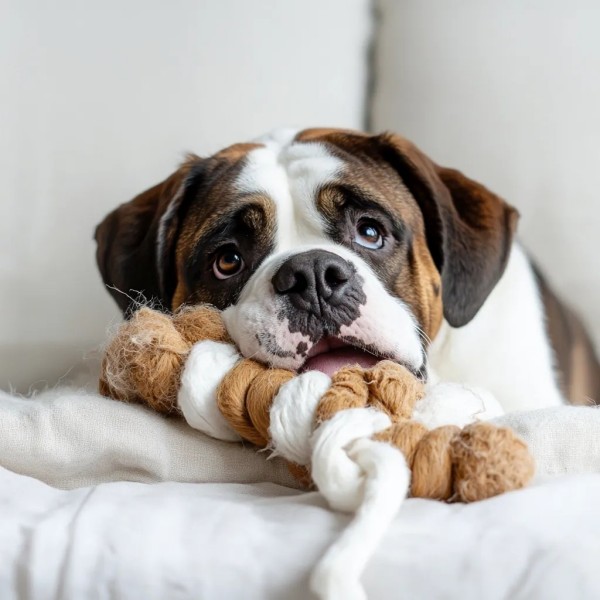
The Eco-Friendly Choice: Sustainable Dog Training Toys for a Greener Planet
Dog training toys aren’t just for keeping your pup occupied; they’re a gateway to a deeper connection and a greener world. As pet parents, we often seek ways to nurture our furry friends while also making a positive impact on the environment. That’s where eco-friendly, sustainable dog training toys come into play. These toys aren’t just good for your pet; they’re good for the planet too. Here’s how they can make a difference and why they’re worth considering for your pup’s training regimen.
Incorporating sustainable materials into dog toys is a simple yet powerful step towards environmental responsibility. Many traditional toys are made from plastics that take centuries to decompose, contributing to pollution and harming wildlife. Eco-friendly toys, on the other hand, are crafted from biodegradable or recycled materials that minimize environmental impact. Imagine a rubber tug toy made from recycled rubber or a plush toy filled with organic cotton—these are not just toys; they’re a statement.
The durability of eco-friendly toys often surpasses that of their conventional counterparts. While a plastic bone might crack or break, a wooden one can withstand years of play. This longevity means fewer replacements and less waste. It’s a win-win situation where your dog gets to enjoy a toy that lasts longer, and you contribute to reducing the environmental footprint.
Many pets have allergies or sensitivities, and eco-friendly toys offer a safer alternative. These toys are typically free from harsh chemicals, dyes, and plastics that can cause irritation or even toxicity. A natural rubber tug toy, for instance, is a gentle choice for dogs with sensitive skin or those prone to allergic reactions. This not only ensures a healthier playtime but also aligns with the growing trend of mindful pet care.
The design of eco-friendly dog training toys often encourages more interactive and engaging play. They might feature puzzle elements that stimulate your dog’s mind, or they could be made in a way that promotes physical activity. These interactive features not only make training sessions more enjoyable but also help in preventing obesity and other health issues associated with a sedentary lifestyle.
When it comes to sustainability, the production process matters just as much as the materials used. Eco-friendly toys are often manufactured using energy-efficient methods and by companies committed to reducing their carbon footprint. This means less energy consumption and fewer greenhouse gas emissions, contributing to a healthier planet.
The appeal of eco-friendly toys extends beyond the environmental benefits. They often come in unique designs and vibrant colors that make them stand out. This variety can be a delightful addition to your home, with each toy telling a story of its own. It’s not uncommon for pet parents to become as attached to these toys as their dogs do.
One of the most significant advantages of choosing sustainable dog training toys is the support of local and small-scale artisans. Many eco-friendly toy manufacturers work with local communities, providing jobs and helping to preserve traditional crafts. By purchasing these toys, you’re not only investing in your pet’s happiness but also in the livelihoods of others.
There’s a sense of pride that comes with using eco-friendly products, and dog training toys are no exception. Owning a sustainable toy can be a conversation starter, inspiring others to consider the environmental impact of their purchases. It’s a subtle yet effective way to spread awareness about sustainability and encourage more pet owners to make eco-conscious choices.
The benefits of eco-friendly dog training toys are multifaceted. They’re better for the environment, they last longer, they’re safer for pets with sensitivities, and they contribute to local economies. Moreover, they encourage interactive play that strengthens the bond between you and your dog.
One pet parent shared her story about how an eco-friendly chew toy transformed her dog’s behavior. “I had been struggling with my dog’s separation anxiety,” she said. “But after switching to a natural rubber toy, he seemed more content and engaged during our time apart. It was amazing to see how something as simple as a toy could make such a difference.”
Another success story involved a dog that had difficulty learning new commands. “My dog was a bit of a stubborn learner,” the owner explained. “But with a puzzle toy that required him to figure out how to get treats, he was motivated to try new things. It was a game-changer for our training sessions.”
These stories illustrate how dog training toys, especially those that are eco-friendly, can make a significant impact on both the pet and the pet parent. They’re more than just playthings; they’re tools that can help shape a dog’s behavior, improve their health, and even enrich their lives.
As the world becomes more aware of the importance of sustainability, eco-friendly dog training toys are becoming increasingly popular. They offer a guilt-free way to indulge your pet’s playful nature while doing your part for the planet. So, the next time you’re shopping for a new toy, consider the benefits of going green. Your dog will thank you, and so will the Earth.
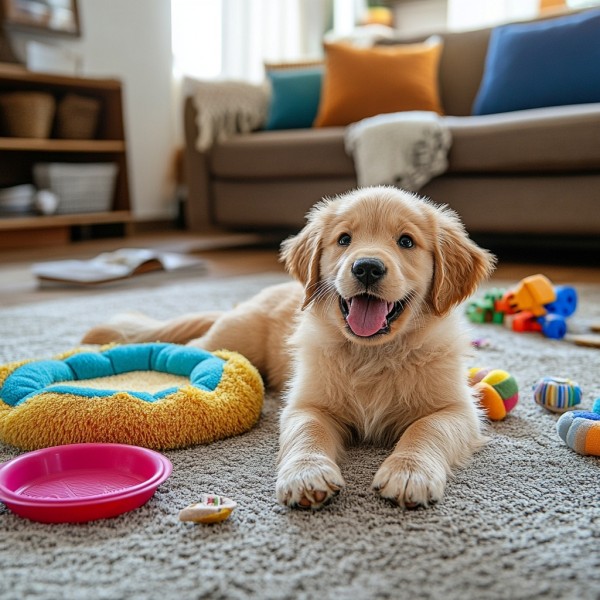
Maintaining Toy Freshness: Tips for Keeping Your Dog’s Training Toys in Top Condition
Incorporating a bit of playfulness into your dog’s training routine can be the key to a well-behaved pup. Here are some tips to ensure that your dog’s training toys stay in top condition, ready to keep your furry friend engaged and entertained.
Regular InspectionsKeep an eye on your dog’s toys regularly. Look for any signs of wear and tear, such as frayed edges, loose parts, or damage that could pose a choking hazard. A quick once-over before each play session can prevent accidents and extend the life of the toy.
Cleaning ScheduleJust like your dog, their toys need regular cleaning to prevent the buildup of bacteria and dirt. Depending on the type of toy, you might need to wash it by hand or in the washing machine. Be sure to follow the manufacturer’s instructions for the best cleaning method and frequency.
Avoid OveruseDogs can become attached to their favorite toys, but it’s important not to let them overuse them. Encourage variety in your dog’s toy collection to ensure that each toy gets a fair amount of playtime. This not only helps maintain the longevity of the toys but also keeps your dog engaged with different activities.
Proper StorageWhere you store your dog’s toys can impact their condition. Keep toys in a designated area where they are protected from direct sunlight and moisture. Storing them in a bin or a toy box can help keep them organized and free from dust and pests.
Reshape and RepairOver time, toys can become misshapen or damaged. Don’t discard them just yet. Depending on the toy, you might be able to reshape it with a little bit of effort. For example, a worn-out rope toy can often be tied back into shape. For more durable toys, a quick patch with strong tape can save the day.
Monitor for ChewingSome dogs are more aggressive chewers than others. If you notice that your dog is beginning to chew through a toy, it’s time to replace it. Chunks of toy material can be a choking hazard and may not be safe for your dog to ingest.
Rotate ToysTo keep your dog interested and to prevent them from getting bored with their toys, rotate them regularly. After a few days of play, put some toys away and bring out others. This rotation can also help you identify which toys your dog prefers and may need more frequent maintenance.
Check for OdorsOver time, toys can start to smell. If you notice a strong odor, it’s a sign that it’s time for a thorough cleaning. In some cases, you might need to wash the toy more frequently or even replace it if the smell persists despite cleaning.
Use Toys as RewardsUsing your dog’s toys as rewards during training sessions can help keep them in good condition. Not only does it encourage your dog to engage with the toy, but it also reinforces positive behavior. It’s a win-win situation for both of you.
Educate Your DogTeach your dog how to play with their toys properly. For example, if they tend to bite toys, show them how to grab them gently. This can help prevent unnecessary wear and help your dog understand that toys are meant for play, not destruction.
By taking care of your dog’s training toys, you’re not only ensuring that they remain effective for teaching and entertaining, but you’re also promoting a safer play environment for your furry friend. Regular maintenance and thoughtful play can go a long way in keeping your dog’s toys in tip-top shape.
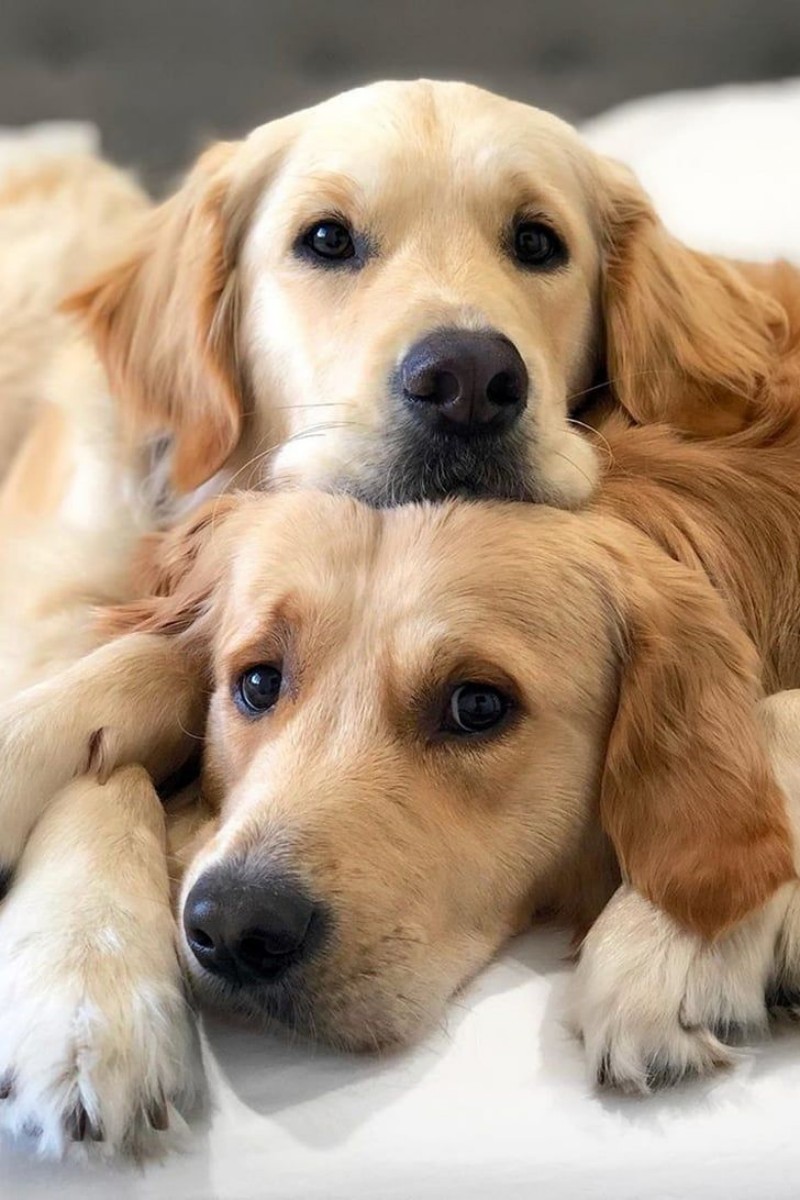
In Conclusion: Investing in Dog Training Toys for a Happy, Well-Trained Pet
Investing in dog training toys is a smart move for any pet parent aiming for a happy, well-trained pet. These toys aren’t just for entertainment; they play a crucial role in shaping your dog’s behavior and intelligence. Here’s why these toys are worth every penny and how they contribute to your furry friend’s overall well-being.
Dogs are naturally curious creatures, and training toys tap into this innate curiosity, encouraging them to learn and engage with their environment. By providing these toys, you’re essentially giving your dog a tool to explore and understand the world around them, which can lead to a more balanced and contented pet.
One of the most significant benefits of dog training toys is the mental stimulation they offer. Boredom can lead to destructive behavior, but a well-chosen toy can keep your dog’s mind active and their energy levels in check. Puzzle toys, for example, challenge your dog’s problem-solving skills, preventing boredom and keeping their cognitive abilities sharp.
Training toys also serve as a fantastic way to reinforce positive behavior. By using treats or rewards within these toys, you can teach your dog to associate good behavior with playtime. This not only strengthens the bond between you and your pet but also creates a structured routine that can improve your dog’s overall behavior.
For many dogs, physical exercise is essential for maintaining a healthy weight and preventing obesity. Training toys that encourage movement and play can help ensure your dog gets the physical activity they need. Fetch toys, tug-of-war ropes, and even interactive laser pointers can be great for getting your dog up and running.
In addition to physical and mental stimulation, training toys can also help with socialization. Dogs learn from other dogs, and toys that mimic the behavior of other pets can be particularly beneficial. They can help your dog practice social skills and learn how to interact appropriately with other animals.
When it comes to selecting the right training toy, it’s important to consider your dog’s personality and preferences. Some dogs are more inclined to chew, while others may be more interested in chasing or carrying objects. By choosing a toy that aligns with your dog’s natural tendencies, you can make training more effective and enjoyable for both of you.
For dogs that love to chew, durable rubber toys or those made from KONG materials are excellent choices. These toys are designed to withstand rigorous play and can even be filled with treats to extend playtime. On the other hand, if your dog is more of a fetch enthusiast, a sturdy ball or a frisbee can be the perfect way to get them moving.
For dogs that are more focused on carrying or dragging toys, consider a plush toy with a sturdy handle or a tug-of-war rope. These toys can provide a satisfying outlet for your dog’s natural instincts to pull and carry.
One of the great things about training toys is that they can be used at any stage of your dog’s life. Puppies, for instance, can learn basic commands through the use of interactive toys that encourage them to follow simple instructions. As they grow, these toys can evolve to challenge their developing skills and intelligence.
For older dogs, training toys can be a great way to keep their minds active and their bodies engaged. Games that require memory or strategy can be particularly beneficial for senior dogs, helping to maintain their cognitive health and prevent the onset of dementia.
Real-life success stories are a testament to the power of dog training toys. Take the case of Max, a high-energy Labrador Retriever who used to chew up everything in sight. With the introduction of a durable chew toy, Max’s destructive behavior diminished significantly. Not only did it keep him occupied, but it also provided a healthy outlet for his chewing instincts.
Similarly, Lily, a Border Collie, struggled with anxiety and separation issues. Her owner invested in a puzzle toy that required her to solve a series of challenges to access treats. This not only helped to distract Lily from her fears but also reinforced her problem-solving skills, leading to a more confident and relaxed dog.
When it comes to investing in dog training toys, it’s important to remember that quality matters. Toys that are well-made and durable will last longer and provide more value in the long run. Additionally, considering the environmental impact of your purchase can make your investment even more rewarding.
Sustainable dog training toys are becoming increasingly popular, as pet owners seek ways to minimize their carbon footprint. These toys are often made from recycled materials or biodegradable options, which means they’re better for the planet and can still stand up to the rigors of play.
To keep your dog’s training toys in top condition, regular maintenance is key. After each use, ensure that the toy is clean and free of any treats or debris. For chew toys, it’s especially important to inspect them for any signs of wear and tear, as damaged toys can pose a choking hazard or cause internal injuries.
In conclusion, dog training toys are a valuable investment that can enhance your pet’s life in countless ways. They provide mental and physical stimulation, reinforce positive behavior, and help build a stronger bond between you and your dog. By choosing the right toys and maintaining them properly, you can ensure that your furry friend remains happy, healthy, and well-trained.
